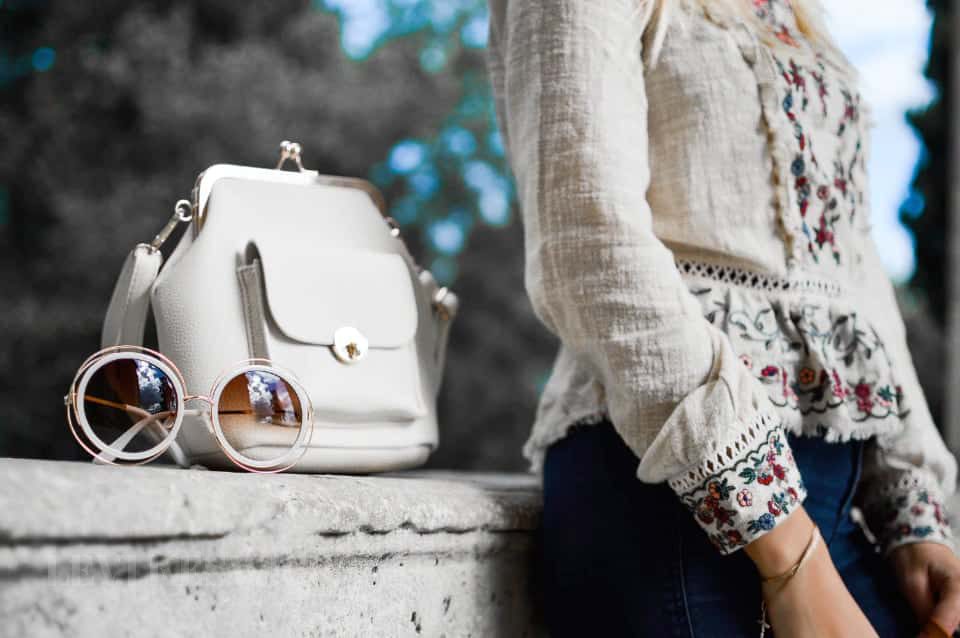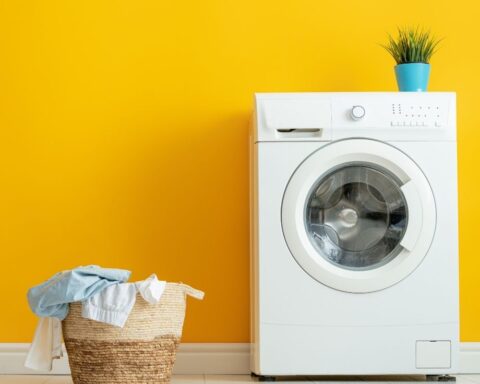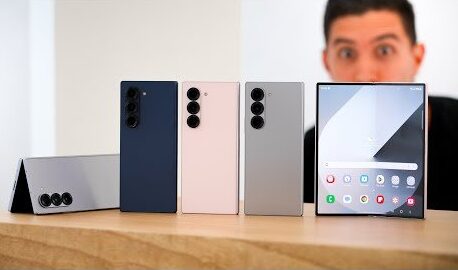Many people want to start a clothing line or clothing brand. After all, how difficult could it be?
The truth is that clothing brands become successful in part because they’re created by people who are passionate about clothing.
But, a clothing brand needs more than just an exquisite apparel design to create a lasting business. It needs all the trappings of a successful business as well. Apparel retailers need to master marketing, manufacturing, and retailing, among other things.
How To Start A Luxury Fashion Brand
Managing a luxury brand in today’s market place is one of the hottest topics in the fashion industry. The lessons in this article can make you an expert in this highly competitive market.
What is a luxury brand? Every brand has a specific customer. Apple’s customers are different from Doris Duke’s customers. The customer of Coach, on the other hand, are different from those of Apple.
Why are the Apple and Doris Duke brands considered luxury brands? Because the companies charge more for their products than that of their competitors. The key difference is in the perceived value. Apple doesn’t sell higher prices to higher income customers, but to those who really want Apple stuff.
Luxury brand marketing is different than marketing other brands. And the differences in target markets, characteristics, and luxury marketing are due to the fact that luxury customers are different from all others. The luxury brand marketing model is successful because they use a special strategy that works. If you’re interested you can always go for SEO Styled marketing see it here on The Guerrilla Agency.
The luxury brand marketing strategy never changes. Luxury brands target and market to their masses (masses of people who can afford their brands); and luxury brands first choose a target market and then market to the wealthy members of their target market.
Consequently, in luxury branding the marketer must consider three groups:
- Mass luxury customers: They make up the target market
- Elite luxury consumers: They are the customers who want and buy luxury products
- Dorothy manning: They are the bridge between mass luxury and elite consumers
Why Choose Mass Luxury Marketers?
1st reason: There are a lot more mass consumers than elite ones.
Doris Duke has many more customers than the American Express brand. There are millions of people who have access to luxury products. Luxury branding wants mass luxury customers (those who can afford it).
2nd reason: Luxury brands are exclusive because they are handmade. They’re made of rare materials. In luxury branding, exclusiveness makes them more valuable.The luster of exclusiveness comes with expense. Luxury companies do not want to waste their time on poor customers. Like you can’t rely on a book that said that one should write a book that will just attract readers who are preordained to be interested in the subject.
3rd reason: Luxury brands target and capture rich customers. Luxury brands target and capture a specific affluent market segment. This segment usually has an affluence bias towards upscale brands (in contrast to mass affluence towards upscale brands). For luxury brands to be successful, they must capture rich customers.
Liabilities: The Mass Luxury Marketer’s Providers Are Luxury!
If you believe the media, luxury brands are struggling to relate to lower and lower income consumers. The wealthy are becoming more like the lower and lower class.
Even though this sales pitch sells the idea that luxury brands must adjust, it is totally wrong. The masses of a luxury brand’s providers are the elite luxury customers. The masses are more likely to buy luxury.
Luxury branding must be wary of their rich customers and their suppliers. Just because they are wealthy doesn’t mean they are ideal customers.
The goal for the luxury brand marketer isn’t to sell to the poor but to sell to the rich. That is the mass luxury marketer’s provider.
Why Luxury Strategic Marketing Is A Good Thing
Why is the mass luxury approach so effective? The reason is that people who are wealthy are more likely to want luxury items. They wish to be surrounded by luxury products.
While rich consumers are ideal for luxury brands, the rich aren’t the only ideal consumer for luxury brand marketing programs. The rich represent the elite.
A luxury brand must also consider marketing to the golden segment of the marketing pie. The elite segment is a species of the golden segment.
According to research, for luxury brands the golden segment is a critical part of the marketing strategy. The golden segment is a class that buys luxury products in volume.
The golden segment is a perfect target market for luxury brands. Because they buy in volume, they are well-informed about luxuries. The golden segment is a perfect buyer and brand evangelist.
Another difference between the rich and the golden segment is that the golden segment isn’t interested in status symbols. They don’t care what rich people think of them.
Why would luxury brands use the luxury branding model? It would be foolish to pursue customers who can’t afford your products.
When you buy a luxury product, you’re paying for more than just success. You’re getting a unique experience. This is why the luxury branding model works.
If you were to ask the biggest luxury brands in the world, they would all say that the best way to sell a luxury brand is to sell it as a unique experience. But, the rich are the ideal consumers for luxury brands.
In luxury branding, the culture of a certain lifestyle is critical to monetizing the brand. However, when considering the culture of a certain lifestyle, your product must be the perfect match. The strategy for luxury brands involves the perfect match between the brand and the customer. That is the luxury branding process.
The luxury lifestyle is a product of the unique experience of consumers. The brand is the function that makes that experience possible.
Put another way, the luxury branding strategy specifies the point of buying the product. The product becomes the experience; and the experience identifies the brand. Thus, luxury branding creates a symbiotic relationship between the brand and the consumer.
The Luxury Brand Marketing Mistake
Look at luxury branding as a way to create an aromatic environment. A brand with a luxurious environment is a brand with an Empire of the Senses. It is an empire that makes consumers salivate, as they see, hear, smell, taste, and feel the brand.
With luxury brands, the aromatic experience is most critical. It’s the aroma that makes consumers and clients salivate with anticipation.
Many luxury brands have an image problem because they haven’t optimized the aroma of their brand experience. The key to unlocking the potential of any luxury brand is to find ways to maximize the aroma. This means using scent to increase the luxury brand’s ability to build the image of what your brand stands for.
The problem is that many luxury brands fail to incorporate the aroma of luxury into their marketing campaigns. Because they don’t create an aromatic experience, luxury brands fail to maximize their use of scent.
Luxury brands do a better job of creating an aromatic environment than any other type of brand. But they don’t go far enough. They capture every possible aspect of the rich’s sensory experience.
The key to the luxury branding model is to treat luxury branding as a Fragrance Marketing approach. Luxury branding doesn’t stop at the audiogenic experience, but they also capture the olfactory experience.
Luxury brands capture the full sensory experience. But, it’s the aroma that makes the luxury brand experience. Adhering to the luxury branding model doesn’t stop at the audiogenic experience. Luxury brands must capture the olfactory experience. This is the key to luxury branding and it’s the key to successful luxury branding.
How To Start A Luxury Fashion Brand
A closed loop marketing model means that the company’s key strategies go hand in hand all the way to the customer. The goal is to create a continuing customer experience. Today, the key to this model is to use subtle changes in the customer’s environment. In this case, the environment is the customer’s space. Changes in the space must affect the customer to deliver a marketing message.
Another word for complex fashion customers is life consumers. These are the consumers that create their unique life experience based on their experiences in the environment.
The main goal for the luxury brand marketer is to capture the imagination of the life consumer. The role of scent is a critical part of the aroma of luxury. The role of the scent is to create a brand experience in the imagination of the life consumer.
The life consumer is a luxury customer because he or she creates a unique life experience. The goal for the luxury brand is to capture the imagination of the life consumer. The luxury brand must simulate the image of that experience.
The life consumer doesn’t stop at luxury. Many luxury brands fail at luxury because they don’t go far enough with luxury. The life consumer isn’t likely to pay for luxury because he or she is interested in luxury products.
Why? The life consumer isn’t interested in luxury products. A life consumer is interested in the luxury brand experience. To attain the luxury brand experience, a luxury brand must go one step further. It must simulate the experience of luxury.
Too many luxury brands stop at the sensory experience. There is more to life than scent alone. The real luxury brand experience lies in simulating the emotion of luxury.
The goal for the luxury brand marketer is to create the perfect match between the luxury brand and the life consumer. The goal is to attract the best life consumer.
In order to deliver the right message, the luxury brand marketer needs to create a luxury brand experience that is more than the sensation of luxury.
The goal of strategic luxury branding is to create the perfect match between a brand and a consumer and to deliver the same message to that consumer. The goal for luxury brands is to combine the right brand and the customer and make it work.
The goal of the luxury branding model is to attract the right customer and create that brand experience. The goal is to deliver a message with the right scent.
How Did The Story Of Chanel End?
Although this is only a fictional story, it illustrates an important point about the luxury branding model.
It is the luxury marketing plan that makes Chanel so successful. The story goes like this. The Chanel brand continues to sell so well that it must raise its prices. This also happens to other brands. The same thing applies to the world of legal services.
Is it time to do away with the traditional law firm? Or, is it possible that the greatest challenge for law firms now comes from brands like LegalZoom?
Is it time for the traditional law firm to move heavily into branding? Why not? Most law firms are already heavily invested in the branding of individual lawyers.
When Will The World’s Richest Riches Jump Ship?
There is something happening to luxury brands. We admire them, but we don’t trust them. This is a serious problem for Chanel, Gucci, and Louis Vuitton. It’s also a serious problem for other luxury brands. It’s a serious problem because if we don’t trust them, they will not be able to build luxury brands.
For many luxury brands, the problem lies in the fact that they are not perceived as a luxury brand. Many luxury brands do not have the aura of pure luxury. And soon many luxury brands will find this out for themselves.
How will they find out? It’s simple. They will discover that some brands are able to imitate their style and even reproduce their products.
The cost of imitating luxury is very low. But, the cost of other luxury brands imitating the style of other luxury brands is much higher.
The truth is that many luxury brands have had a strange relationship with imitation. They have always imitated each other, but they have never imitated non-luxury brands.
The reason is that imitation is a sensitive issue for the luxury brands. Successful luxury brands want to be known as the best.
The trouble for luxury brands is that imitation could be the best form of flattery. But, imitation also subjects luxury brands to the same competition they impose with their luxury logo.
The next step is to imitate the best luxury brands. This is a positive feedback market. If the imitation is successful then imitating other luxury brands can be accomplished without any legal risks.
And this is just the beginning. The next step is to imitate like crazy.
The luxury logo will hold its value for as long as it adds value to the product. But, once it becomes clear that imitation is the secret to success, then its value will evaporate in a moment.
It is the biggest luxury brands that will suffer the worst for the luxury logo will not be able to help the large luxury brands. Their large size will keep them from being a luxury brand at all.
The negative feedback loop for luxury brands will grow with each passing day until it becomes very difficult to impossible to be a luxury brand.
This is the new world of luxury branding.
The luxury brand is based on trust. Without trust the luxury brand is meaningless. It’s easy to become a luxury brand. You just need to be able to prove that you deserve such a distinction.
The luxury logo is a powerful symbol, but its virtue is only temporary.
Many luxury brands become victims of their own success. For many luxury brands, the road to luxury is a road to riches. But, for others, the road to luxury is a road to ruin.
But, why should times be bad for luxury brands? This is the wrong question. The question is; when are times good for luxury brands?
Times are good for luxury brands when they are not imitating any non-luxury brands.








